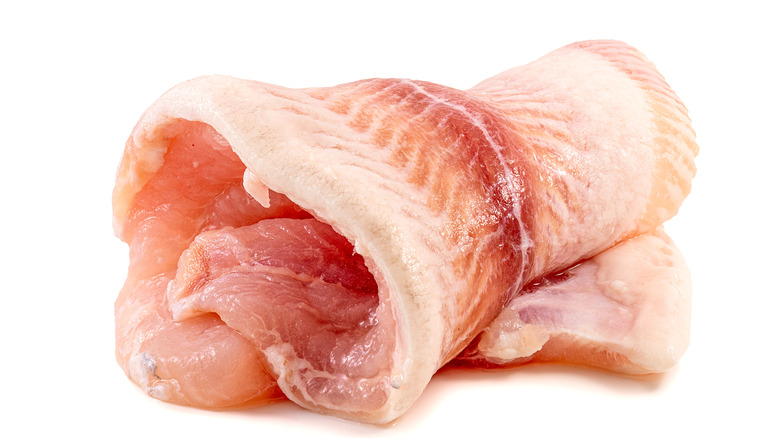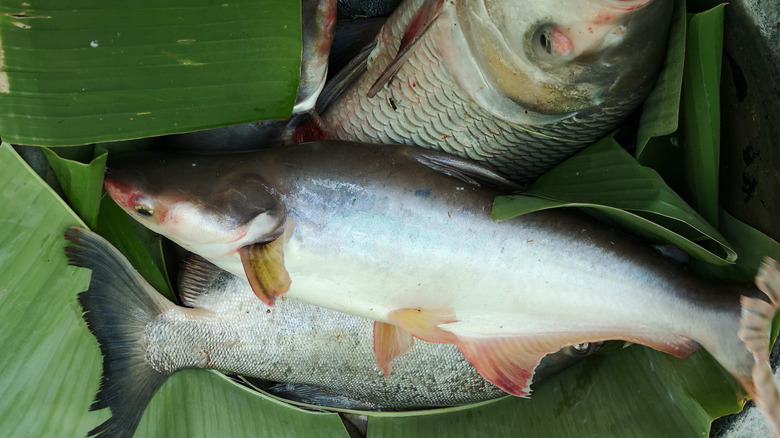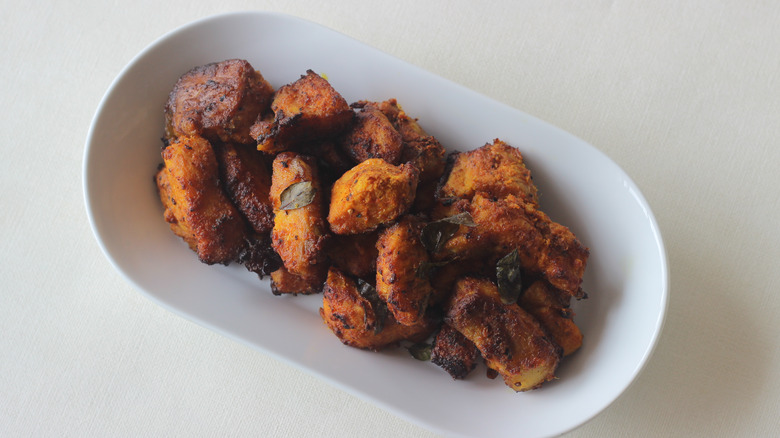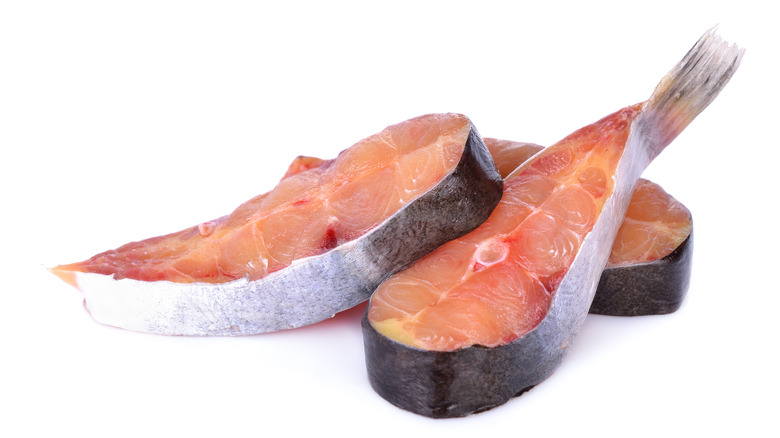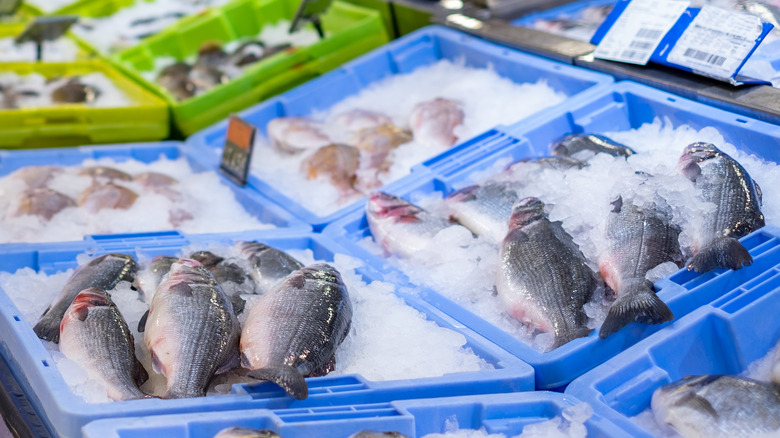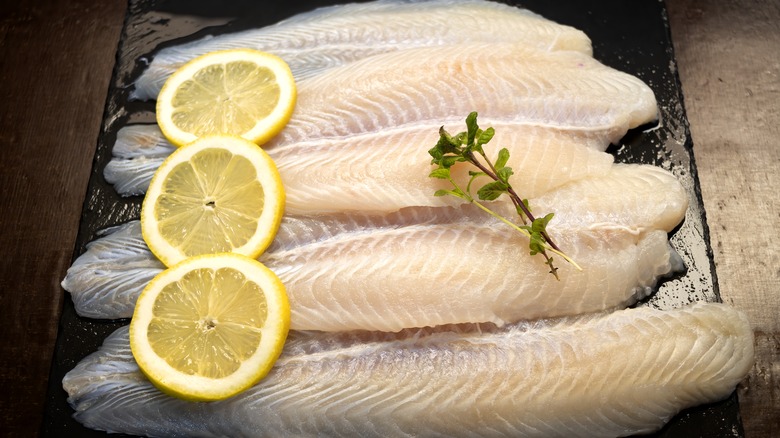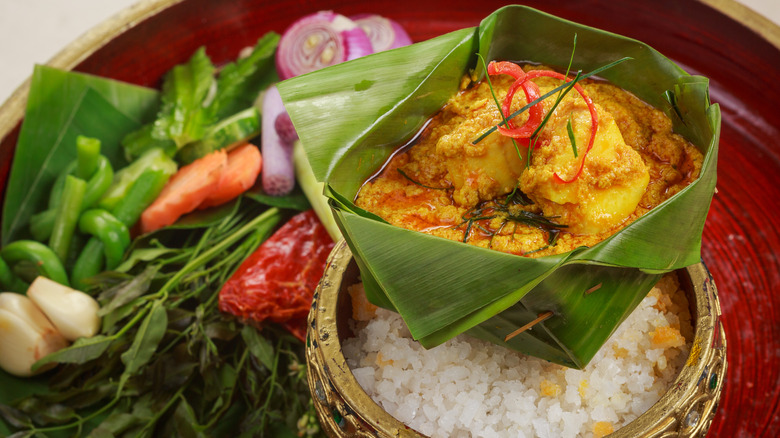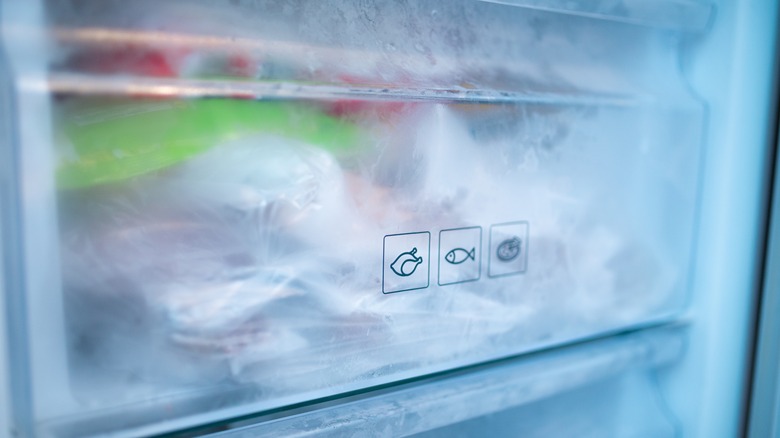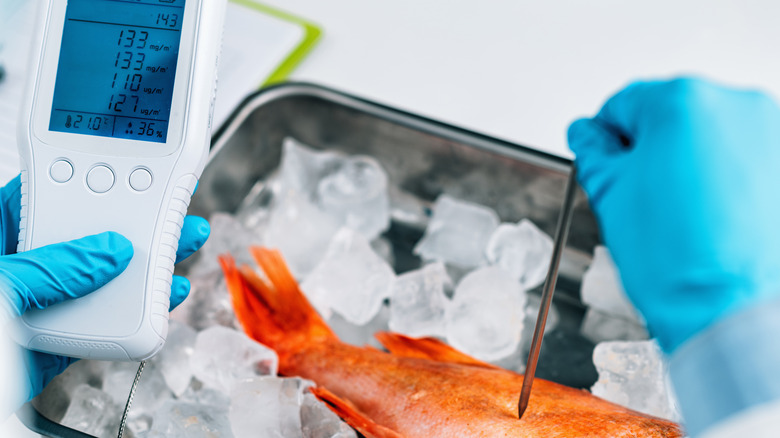What Is Swai And Is It A Nutritious Fish?
Especially for landlocked eaters, fish may seem like an intimidating food to prepare. With less tissue and fat than other protein sources, it's vulnerable to overcooking — creating the mushy, unpalatable result that gives the food a poor image. However, with some know-how and extra care, the quick-cooking animal is a dependably nutritious option. It's saturated with proteins, low in fat, and abundant with Omega 3 acids, which are highly beneficial to brain and heart health. In fact, the American Heart Association recommends eating fish at least twice a week for a well-rounded diet (via the Washington State Department of Health).
For many Americans, another unfortunate downside of the food is its cost — but there are some more affordable alternatives. Especially in the frozen section, a fish fillet can be found for a more reasonable price fit for a weeknight meal. Few fish are as affordable as swai, which is a cousin to catfish and hails from Southeast Asia. Flavorful, easy to cook, and nutritious, it's a great option for a convenient dinner. Let's dive into what makes it so accessible.
What is swai fish?
Swai is a large freshwater fish in the Pangasius genus, a close cousin to North American catfish. Native to Southeast Asia, they're especially common in the Mekong Delta in Vietnam but are also caught in Thailand, Laos, and Cambodia. Especially due to concerns of overfishing, a large portion of swai is farmed. With some commercial fisheries demonstrating poor water quality, this had led to concerns over the fish's quality, via the Journal of the Science Food and Agriculture. However, this depends on the original source of the fish and does not encompass all production.
Sometimes swai is also referred to as Asian catfish, striped pangasius, and creamy dory. New Food and Drug Administration regulation has now halted the sale of this genus under the catfish name. However, the two fish do offer many similarities in flavor, price, and size. Like catfish, swai can reach 100 pounds in weight and offers a white, flakey flesh that's easy to use in many applications. Let's dive into swai's culinary uses.
What does swai fish taste like?
Swai fish has delicate flesh that is very tender. Its cooked texture is similar to tilapia — the flesh turns white and flakes easily when ready to eat. But swai fish is not quite as delicate as tilapia; it has a meatier texture that makes it more substantial.
The flavor is perfect for many eaters who don't prefer any trace of "fishiness." It's sweet and mild, with a slightly buttery flavor. Because it is so mild, swai fish works well with marinades, acting as a blank canvas that absorbs the flavor of whatever it is paired with.
For some, the flavor and texture match that of farmed salmon. Others liken the texture and taste to catfish. Regardless, the versatility of its taste and texture means that it works well in many dishes where a more expensive catch might not be a possibility. Swai fish adds nutrition to a dish while letting strong flavors and other ingredients shine.
Nutrition information about swai
Swai offers nutritional value similar to other white-fleshed fish. According to Healthline, a 4-ounce serving is packed in 15 grams of protein with only 1.5 grams of fat and 70 calories. While less protein-dense than salmon, it offers a similar saturation value as catfish. The fish is a great source of selenium, which aids DNA production against infections and cell damage (via Harvard). Additionally, it packs in a dose of niacin, which aids in essential processes like energy conversion and DNA repair. Unfortunately, swai's low-fat content also means that it's not an ideal source of omega-3; fattier fish like salmon, sardines, and cod are a better option. Nonetheless, swai is an excellent fish for protein needs — especially considering how easy it is to prepare.
As a factory-farmed fish, it's important to purchase well-sourced swai for optimum nutrition. Some large-scale fisheries have drawn health concerns, with unsafe levels of pathogens like Salmonella. However, such concerns have also prompted tighter regulation from production facilities. Extend extra vigilance to cooking the fish thoroughly, as microbe growth slows at higher temperatures.
Where to buy swai fish
Most swai for sale in the U.S. is in the form of frozen filets. Because it can be challenging to judge the quality of frozen fish, make sure you are purchasing fish that is clearly labeled with a Best Aquaculture Practices (BAP) certification or other quality labels such as ASC Farmed Pangasius and Naturland. These ensure that your fish is farmed, harvested, and packed following certain quality standards.
If you are in the market for fresh swai fish, you'll have to visit your local fishmonger. Swai fish is classified by color: white, pink, and yellow. White is the highest quality and prized by chefs. Lighter flesh also indicates that the fish has been minimally treated with chemicals, if at all.
If possible, select whole swai fish. Look for a glossy eye, pink gills, a shiny scaled body, and a neutral smell. If you smell ammonia, that is a sign that the fish has begun to decay. Additionally, take a look at the ice on which fresh fish is displayed. It should be changed daily to avoid bacteria or contamination. If you notice ice that is cloudy, has a grey tint, or is pooling water, shop somewhere else. Those are signs that the ice display has been used over multiple days and could be dangerous.
How to cook with swai
Swai is similar to other white-fleshed fish, with a delicate texture and slightly sweet taste. It doesn't have much of a fishy flavor, and especially when fresh, is oftentimes milder than catfish. Plus, it traps an abundance of moisture and has a pleasant fat content that makes it easy to cook with. In any preparation method, make sure to cook Swai thoroughly to an internal temperature of 145 degrees Fahrenheit to eradicate any unwanted bacteria, notes Healthline.
The white-fleshed Swai does well with common fish cooking techniques like baking, poaching, and as an ingredient in a stew. The food is sturdier than other fishes, which also makes it well-suited for applications like deep-frying and grilling. Especially since its flesh is relatively mild, it does well in a marinade, readily infusing any flavors. And as a food typically sold frozen, such variability makes it easy to incorporate into a wide range of fish dishes — no need to pick one specifically for swai.
Dishes prepared with swai
Swai's propensity to soak in flavors makes it especially well-suited to preparations with citrus. For a quick and easy swai dish, simply rinse the filet and pan fry in olive oil. Next, melt butter in a pan and combine with white wine and lemon. Cover the swai with the sauce and serve. The same assortment of ingredients also works for an oven preparation, with the sauce assembled first, poured over the raw fish, and baked for around 15 minutes. To add flavor to swai with even less fuss, consider air-frying. Cover the fish in a preferred seasoning (like a cajun spice mix), and cook — no oil and additional flavors necessary.
And while keeping it straightforward makes the fish a great option for weekday meals, it can also be a vessel for more elaborate affairs. Substitute for catfish to craft some delectably crispy fish nuggets. Alternatively, keep it faithful to its Southeast Asian origins and craft fish amok — a delicate and floral coconut milk and fish curry. Served in a banana leaf, the dish utilizes a Khmer yellow kroeung paste for flavor, which comes together with turmeric, galangal, lemongrass, and other aromatic ingredients. The sky's the limit for dishes with swai — simply substitute it into any recipe that calls for a white-fleshed fish.
How to store swai fish
Once you get your swai fish home, use it fresh within two days. This is the best way to experience the true flavor and texture of the fish. To keep fish cold and at its peak of flavor, surround it with ice or cold packs, wrap it tightly, and store it on the bottom shelf of your fridge in the very back until you're ready to cook. This is the coldest part of your refrigerator. Storing raw fish on the bottom shelf also reduces the chances of cross-contamination if your container leaks.
If dinner plans change or you're shopping for future meals, the freezer is your best friend. Properly wrapped and frozen fish will be safe to eat indefinitely, assuming there has been no loss of power or partial thawing. However, the taste and quality begin to suffer after a period of time. The flavor and texture of cooked swai are well preserved for three months when kept below 32 degrees Fahrenheit, though 0 degrees Fahrenheit is ideal. Raw frozen fish lasts longer — up to eight months.
Concerns about swai fish
If you think twice before buying swai fish, you're not alone. Many people have raised concerns about the safety of swai fish and with good reason. The Seafood Watch Program from Monterey Bay Aquarium has identified environmental and safety concerns regarding swai fish farming practices.
Some research has identified wastewater dumping from swai fish farms — a major environmental concern for the surrounding ecosystem. Wastewater can include not only antibiotics and anti-parasitic drugs but also chemical disinfectants used to keep farming tanks clean. There are also conflicting studies about mercury levels in swai fish. Some studies reveal safe levels, while others have found potentially high levels. Additionally, trace amounts of antibiotics used in swai fish farming can remain in the fish, even after cooking.
If you enjoy swai fish, all is not lost. When buying, look for fish that has been eco-certified by a group like the Aquaculture Stewardship Council. This will be indicated directly on the package. The certifying agency's logo on the package provides peace of mind that you're not consuming fish which contributes to environmental harm of improper fish farming practices. When preparing, swai should always be cooked to an internal temperature of 145 F. This destroys harmful bacteria and ensures a safer dining experience.
